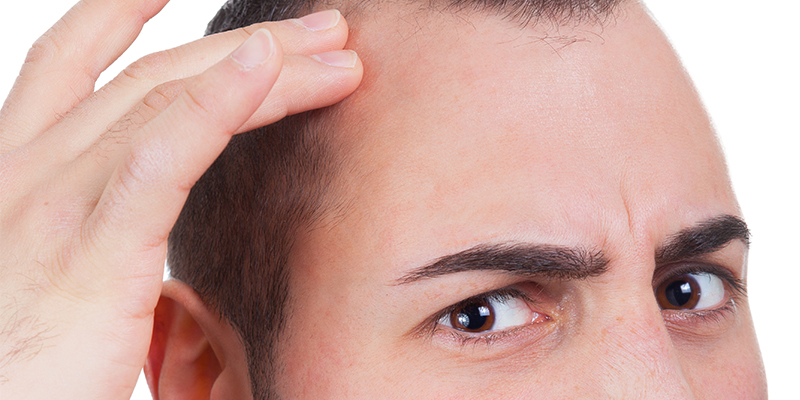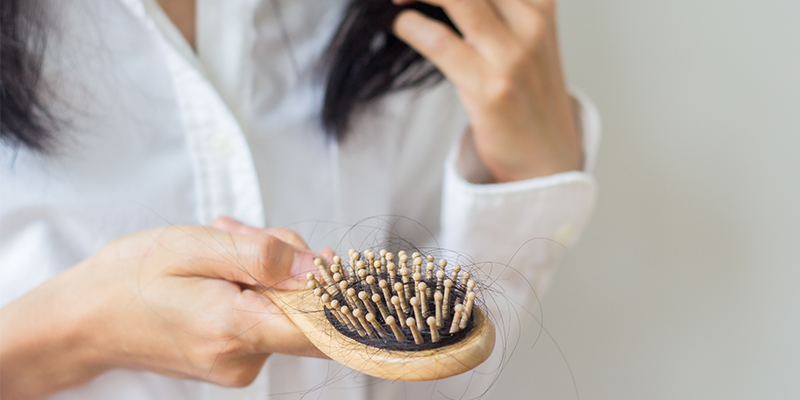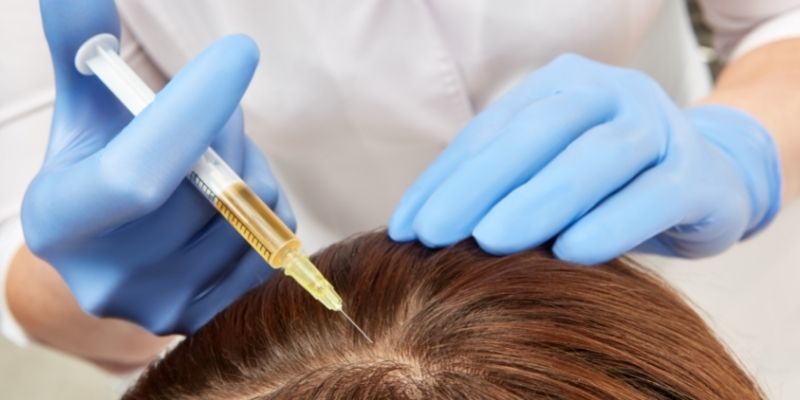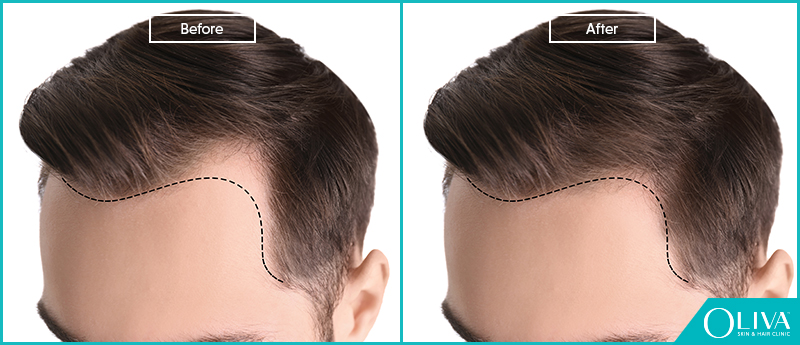How To Treat Temple Hair Loss?
Your hairline is a frame for your face. When the hair loss starts to occur, particularly patterned hair loss the frontal hairline begins to recede and widens the forehead. Most people find it alarming when their hair starts thinning at the temples because they realise they are suffering from acute hair loss and there is no way to hide it even with styling. When it comes to this, it requires a medical solution.
In This Article

What Is Temple Hair Loss?
Temple hair loss is one of the earliest signs of androgenetic alopecia or male pattern baldness. Hair begins to thin across the scalp, and then the temple region appears to be balding. It may affect one or both sides. A receding hairline or a widow’s peak usually accompany temple hair loss. This condition affects men more than women and its severity increases with age. It can become irreversible if you do not seek timely treatment.
What Are The Causes Of Hair Loss At The Temples?
If you are beginning to bald around your temples, it is most likely due to male-pattern baldness. Apart from this condition, a few other factors may be responsible for it.
- Male Pattern Baldness (MPB) – Androgenetic Alopecia is a medical term for MPB, a genetic hair loss condition that affects men. It occurs as a result of the increased sensitivity of hair follicles to the Dihydrotestosterone (DHT) hormone. Studies show that 58% of men in the age group of 30-50 years suffer from male pattern baldness; it affects their temple areas first.
- Other Causes – Some other causes of temple hair loss include the following:
- Alopecia Areata: Alopecia areata is a condition characterised by sudden and patchy hair loss all over the scalp. People suffering from alopecia areata may have thinning and patchy hair loss in temples.
- Scarring Alopecia: The medical term for this condition is primary cicatricial alopecia. It refers to a group of hair loss disorders that cause irreversible destruction of the hair follicles and a replacement by fibrous tissue.
- Stress: When our body goes through undue stress, it leads to the interruption of hair in the growth phase (telogen), leading to telogen effluvium. The hair strands in the growth phase move more quickly to the resting phase, and the hair follicles shed more rapidly than usual, leading to hair thinning around the temples.
Stress-related temple hair loss commonly occurs in women because of:
- Postpartum Hair Loss: Postpartum, women experience diffuse hair loss, which can be more in the temples.
- Traction Alopecia: When women style their hair into tight ponytails and buns, they put undue physical stress on the hair follicles, straining the hair at the temples and leading to thinning.
#PRP is a safe non-surgical treatment that would be effective for controlling hair loss at the temples. Watch this video to learn more#
Symptoms Of Temple Hair Loss:
Here are some of the signs associated with the condition:
- Hair thinning
- Receding hairline at the temples
- Scalp showing through in the temple area
- Hair damage, brittleness and weakness of hair strands
- Development of a widow’s peak
Can You Treat Hair Loss At The Temples?
Yes, balding temples are treatable, but it is advisable to consult a doctor sooner rather than later. During the early stages, there is a chance that the hair follicles are still active. Once the hair follicle opening is fibrosed, non-invasive treatment cannot reverse it.
Your trichologist may suggest a treatment for your temple hair loss after evaluating its underlying cause and the severity of the condition. The doctor may recommend the use of a combination of medications, topical gels, and foams. Once your dermatologist identifies the cause and pattern of your hair loss, he or she may even recommend Platelet-Rich Plasma Therapy, a procedure that effectively treats androgenetic alopecia.
What Are The Treatments For Hair Loss At Temples?
You must seek early medical help to treat thinning hair at the temples as home remedies may not work. Early diagnosis and intervention help in attaining better treatment results. Your trichologist may recommend the following options –
- Platelet-Rich Plasma (PRP) Treatment: PRP is a safe non-surgical treatment that would be effective for controlling hair loss at the temples. It uses platelets extracted from the patient’s blood to stimulate new hair growth. This therapy works well to delay balding in both men and women substantially.
- Minoxidil: Popularly called Rogaine, Minoxidil is an FDA-approved drug for hair growth. It is available as a topical foam or solution that helps treat temple hair loss. Dermatologists often prescribe it to both men and women to sustain the results of PRP therapy.
- Finasteride: This is also an FDA approved topical treatment for different types of hair loss. However, doctors prescribe finasteride for men and women in their menopausal age group to treat genetic hair loss.
- Temple hair transplant: This treatment option is avoidable in the early stages, as there are chances for male pattern baldness to develop during the later years. Instead, this surgery is a last resort when nothing else works.
Temple Hair Loss Before And After Results
Frequently Asked Questions About Temple Hair Loss
Shaving the head does not affect the hair follicles. It merely cuts the hair at the scalp’s surface. Hair at the temples will grow back the same way. If you notice a drastic decrease in hair growth and you observe bald patches, consult a dermatologist immediately.
Temple Hair Loss is reversible. It is merely an indicator of an underlying condition. See a dermatologist at the earliest to identify a suitable treatment option and attain best results.
Yes, it is quite normal, especially as you age. Temple hair loss is often one of the earliest signs of androgenetic alopecia, also known as male pattern baldness, though it can affect women as well. However, it’s important to consult with a doctor early on, as other underlying causes like stress, alopecia areata, or traction alopecia could be a factor.
Temple hair loss can often be reversed or stopped, especially with timely treatment. Early intervention is key while the hair follicles are still active. If left untreated, the hair follicles may become irreversibly dormant, making regrowth difficult without more invasive procedures like a hair transplant.
The best treatment depends on the underlying cause and the individual’s condition. The article mentions several effective options, including:
- Platelet-Rich Plasma (PRP) Treatment: A non-surgical therapy to stimulate hair growth.
- Minoxidil (Rogaine): A topical foam or solution approved by the FDA.
- Finasteride: An FDA-approved oral medication prescribed for men and post-menopausal women with genetic hair loss.
- Hair Transplant: A surgical option considered as a last resort when other treatments are no longer effective.
For women, temple hair loss can be caused by various factors, including androgenetic alopecia, postpartum hair loss, or traction alopecia from tight hairstyles. Treatments may include topical solutions like Minoxidil, or in some cases, a doctor might recommend PRP therapy or other prescribed medications. Avoiding tight hairstyles is also a crucial preventative measure.
Temple hair loss in men is most often a sign of male pattern baldness (androgenetic alopecia). Treatments can include topical applications like Minoxidil, oral medications such as Finasteride, or surgical options like a temple hair transplant if the condition is advanced.
While your article doesn’t specifically mention vitamin deficiencies, it’s a common cause of hair loss. Deficiencies in vitamins like Biotin, Vitamin D, Zinc, and Iron are known to affect hair health. Addressing these with diet or supplements can be a part of a broader treatment plan for hair loss.
The temple region is part of the frontal hairline, so treatments for temple hair loss are also effective for the frontal hairline. Options include Minoxidil, Finasteride, PRP therapy, and in severe cases, a hair transplant. Early treatment is crucial for the best regrowth results.
While your article focuses on medical treatments, many people also look for home remedies. These can include using natural oils like coconut or castor oil, scalp massages to improve blood circulation, and maintaining a healthy diet. However, it’s important to note that these may not be as effective as clinically proven treatments for genetic hair loss and should be used as a supplement to, not a replacement for, professional medical advice.
Read This Next

Scalp Exfoliation: Benefits, Techniques & Home Remedies

How Diet Affects Hair Health: Foods for Stronger & Healthier Hair

Botox Hair Treatment Side Effects: What You Should Know Before Trying It

Thyroid Condition & Hair Loss – What Can You Do About It?

Top Myths And Facts About PRP Hair Loss Treatment





